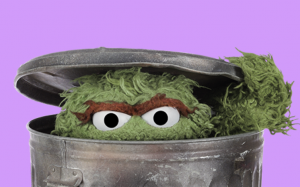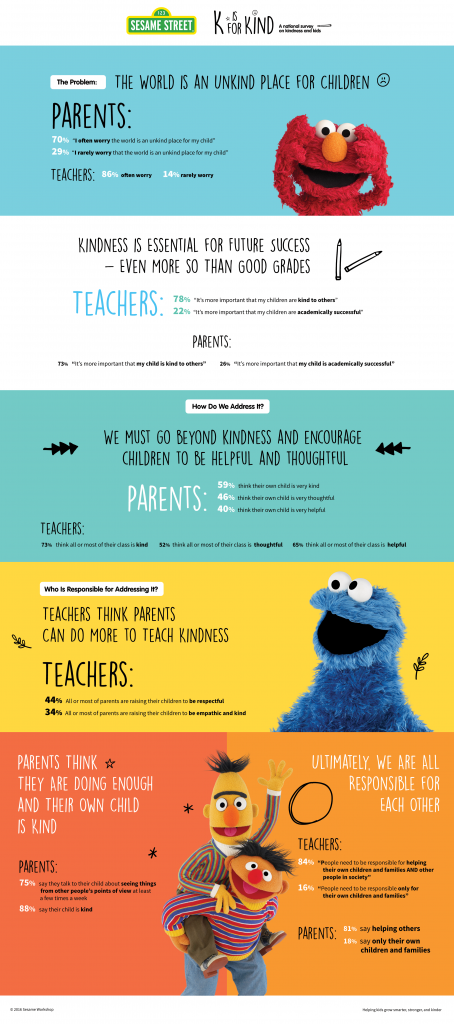Thanks to the wonderful Dr. Jessica Piotrowski on behalf of the Center for Research on Children, Adolescents, and the Media in Amsterdam as well as Northwestern’s Center for Media & Human Development and the Joan Ganz Cooney Center, I was fortunate to be part of a preconference of the International Communication Association’s Children and Media Division this past May. The goal of the preconference, titled “Invention & Intervention: Blending Research with Practice to Develop Effective Media for Youth” was to bring academics together with those who work in the children’s media industry to chat about findings and processes, as well as to think about ways to inform each other’s work. The particular topic on which I was assigned to speak was diversity in children’s media. After speaking with Jess and agreeing to the topic, I did what I usually do to get some interesting writing ideas—I turned to my trusted search engine. I googled the word “diversity.” The first several synonyms that came up were variety, miscellany, assortment, and the only antonym that was presented was “uniformity.”
 What could I say in 15 minutes about the opposite of uniformity? I titled the talk “Exposure & Empathy” because I think those are the two important qualities that help us notice, understand, and appreciate variety, miscellany, and assortment. First in terms of exposure, it is clearly important to highlight all types of different characters with different strengths, weakness, thought processes and different ways of thinking, living, and learning. My one caveat about “exposure” was that when we are focusing on differences, we must be careful about dealing with negative feelings around those differences, especially with young preschool children. By introducing the notion that some might feel bad about those differences (rather than being curious) we run the risk of introducing something that was not on a child’s radar. In an initial draft of an episode for the upcoming season of Sesame Street, one of the characters was sad because her hair could not flip the way her friends who had different hair textures could flip theirs. The message and resolution was intended to be that everyone’s hair is unique and can do different things. But when we tested the segment, we found that is not the message that many children understood. They were focused on the fact that her hair was broken and could not flip. When we shared this finding with the producers, they completely rewrote the script. Our recommendation, therefore, with young children is not to focus too much on how differences might make one feel (even though the stories usually intend to counter any sadness), but rather to demonstrate characters’ curiosities about those differences and the positives involved with being unique and different.
What could I say in 15 minutes about the opposite of uniformity? I titled the talk “Exposure & Empathy” because I think those are the two important qualities that help us notice, understand, and appreciate variety, miscellany, and assortment. First in terms of exposure, it is clearly important to highlight all types of different characters with different strengths, weakness, thought processes and different ways of thinking, living, and learning. My one caveat about “exposure” was that when we are focusing on differences, we must be careful about dealing with negative feelings around those differences, especially with young preschool children. By introducing the notion that some might feel bad about those differences (rather than being curious) we run the risk of introducing something that was not on a child’s radar. In an initial draft of an episode for the upcoming season of Sesame Street, one of the characters was sad because her hair could not flip the way her friends who had different hair textures could flip theirs. The message and resolution was intended to be that everyone’s hair is unique and can do different things. But when we tested the segment, we found that is not the message that many children understood. They were focused on the fact that her hair was broken and could not flip. When we shared this finding with the producers, they completely rewrote the script. Our recommendation, therefore, with young children is not to focus too much on how differences might make one feel (even though the stories usually intend to counter any sadness), but rather to demonstrate characters’ curiosities about those differences and the positives involved with being unique and different.

Besides demonstrating curiosity about diversity and differences, affirming such variety comes from a sense of kindness, empathy, and understanding the world from other people’s point of view. Unfortunately, more and more is being written about how kindness and empathy are on the decline. About a year and a half ago, we (i.e. Sesame Workshop) decided to do a national study on Kindness because we saw these disturbing trends. There are several findings in our study that were particularly alarming to me. For example, 70% of parents felt that the world is an unkind place for their child. Furthermore, about 2/3 of parents said that children (other than their own) were more likely to be disrespectful than respectful and that most people do not go out of their way to help others. On the other hand, most parents felt that their own children are kind and accepting of others who are different and that the characters in media that their children liked the most were kind, helpful, and accepting of others who are different. There is clearly a disconnect between perceptions of the self, one’s own children and family, and the behaviors of others. One explanation for this is that perhaps our very definition of kindness varies. In our study we asked parents whether it was more important for children to have empathy or to have manners. More parents chose manners (58%). This did not differ by the age of the child. If the surface behaviors involved in manners is seen as more important than truly understanding where other people are coming from and how they might feel, we (the collective we) have a lot of work to do. Perhaps our job as media creators and researchers is to help children think more about characters’ viewpoints and their motivations. A great example of this is Scribble Tales from Sesame Studios. These stories tell classic stories from different points of view. In one video you see the Three Little Pigs’ version of events, but in another video you get to hear the story from the Wolf’s perspective. Hearing and understanding both sides of the story allows for more flexible thinking.
This also requires us as media creators to listen to and understand people who do not agree with us or think like us. One of the things our group is doing even more of is making sure we get a range of voices and opinions in our studies. While historically we have had diversity in our research given that we are based in New York City, more of our research is conducted here than anywhere else. Lately however, we have been making extra efforts to go to very un-New York places (I actually had the research team search: “What cities and town are the most different from New York?”). Our team has gone to various cities and towns across the USA to hear from children and parents about a variety of content—Sesame Street and otherwise. These interviews and focus groups have been really eye-opening in making sure we have a variety, miscellany and assortment of opinions and views examining our work. By having this exposure, I am hoping that we have become more empathic as well.


